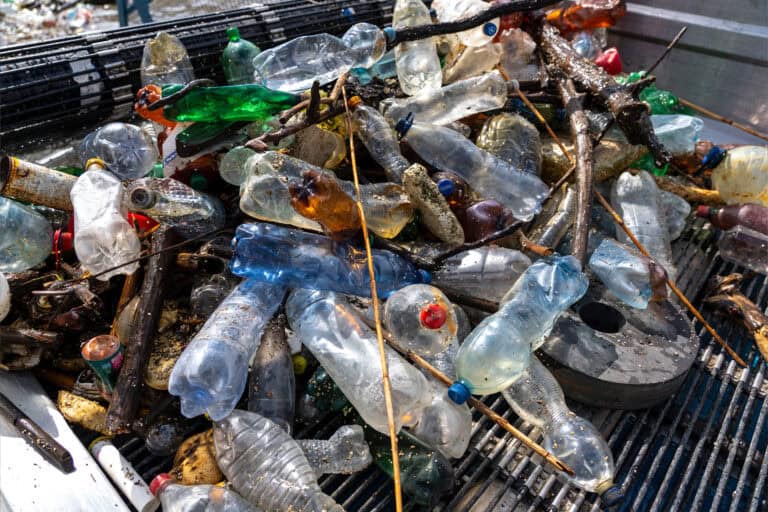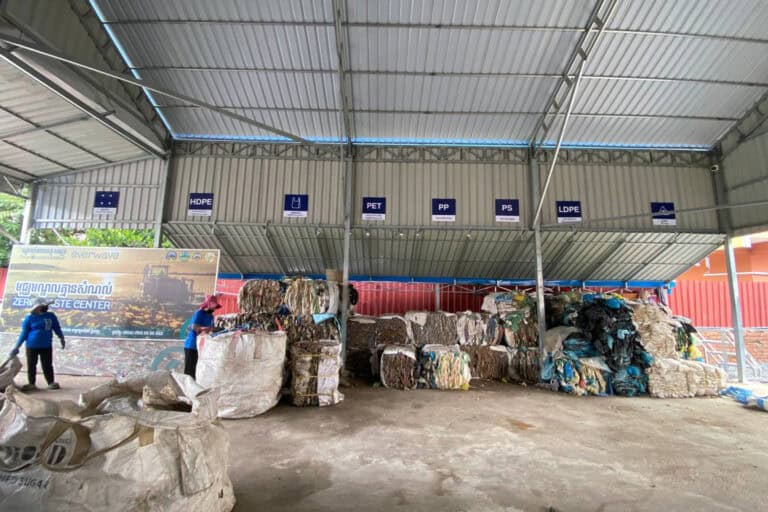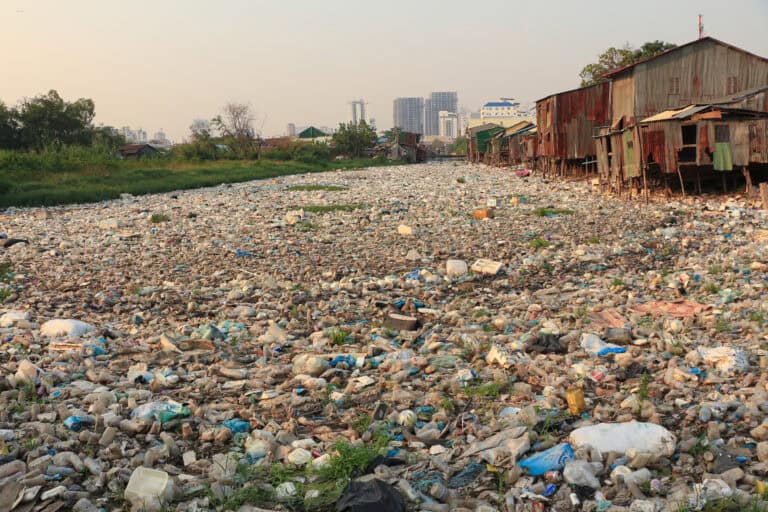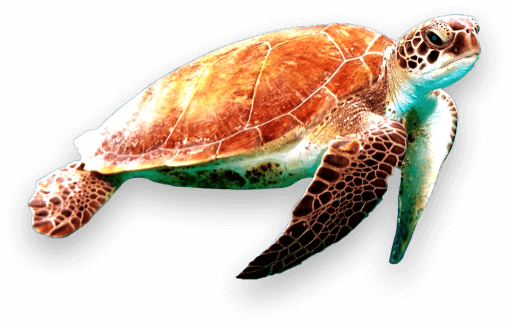Understanding recycling - it's not that simple
Plastic is long-lasting and highly versatile – but it doesn’t break down naturally. Currently, there’s still no effective method for recycling all types of plastic.
What does “recycling” even mean?
Basically, recycling is the processing and reuse of raw materials that have already been used1. Sounds simple at first – but a closer look quickly reveals that the processes behind it are complex.
The term encompasses all materials, including metals, paper, plastic, and glass. Each material requires specific processes and methods to be reintegrated into the production cycle – accurate sorting of materials prior to recycling is crucial. Materials like scrap metals, paper, glass, plastics, and tires have especially high recycling potential.2
Within recycling, a distinction can be made between different processes:
- Reuse: a material is used repeatedly for its original purpose (e.g. reusable bottles)
- Reuse: the residue of a material is used for other purposes (e.g. granulate from used tires for the production of floor coverings)
- Recycling: a secondary material is produced from the material, which in turn flows into the production of the original product (e.g. used glass for the production of container glass)3
Different types of plastics
Each year in Germany, approximately 5.6 million tons of plastic packaging are discarded in household waste after only one use. However, less than a third of this is recyclable – as not all plastics are created equal.
The term “plastic” refers to synthetically produced materials, particularly polymers, that do not occur naturally. In general, plastics are composed of polymers and additives – chemicals added to make the plastic more flexible, safer, or more durable. The polymers can either be derived from natural sources or produced synthetically, primarily using natural gas, crude oil, coal, and natural rubber.4 And depending on their structure, some plastics are easier to recycle than others.
An initial overview provides the classification of the seven most common types of plastics:
PET (polyethylene terephthalate)
- frequent use: beverage bottles, food packaging, textiles, fibers
- transparent, light, strong and easy to recycle
HDPE (high density polyethylene)
- frequent use: milk bottles, shopping bags, pipes
- robust, durable and easy to recycle
PVC (polyvinyl chloride)
- frequent use: windows, pipes, wall cladding
- hard, tough, weather-resistant, chemical-resistant and difficult to recycle
LDPE (low density polyethylene)
- frequent use: shopping bags, food packaging, pipes
- robust, flexibel und leicht zu recyceln
PP (Polypropylene)
- frequent use: food packaging, pharmaceutical bottles, bottles, toys
- Strong, durable, and easy to recycle
PS (Polystyrene)
- frequent use: disposable cups and plates, meat trays, take-away food packaging
- Lightweight, sturdy, and easy to recycle
Other plastics
- this includes PC (polycarbonate), ABS (acrylonitrile butadiene styrene), and other plastics that are difficult to identify
- difficult to recycle due to their uneven chemical and physical composition5
In Germany, mainly PE (27%), PP (20%), and PVC (15%) are produced – which corresponds with the distribution of global demand for plastics.6

Cambodia: Recyclable and non-recyclable waste waste
The waste that we collect in Cambodia is made up of a wide variety of materials. We currently sort the waste into the following categories: PP, PET, PS, HDPE, LDPE, PVC, textiles and non-recyclables.
In the area of recyclable plastic waste, we mainly find PET (polyethylene terephthalate, mostly used for plastic bottles and films) and PP (polypropylene, mostly used for packaging). We sort out these recyclable types and sell them to a local recycling plant, where they are then processed further.
Unfortunately, the non-recyclables have no further value. Here we work together with a local company, Chip Mong Ecocycle: the waste is collected by Chip Mong Ecocycle and sent to their factory for so-called co-processing. This is a process in which the waste is used as an energy source instead of coal and burned in a controlled manner to generate energy for a cement factory.
In addition to our cooperation with Chip Mong Ecocycle, we also work with ReMade Cambodia, a textile company that upcycles textiles that can still be used. Around 10% of all the waste we collect in Cambodia consists of textiles – if they are still usable, we give them to ReMade Cambodia, who work with local designers to make new garments from them.
We pass on other waste that can still be recycled to local recyclers, including glass and metal, for example. A small amount of waste is neither recyclable nor recoverable at Chip Mong Ecocycle – we have to pass this on to local landfill sites as we have no other option for recycling. In 2023, this amounted to less than 10% of all waste.
These different types show how important it is to sort the waste in our Zero Waste Center in order to be able to process as much as possible and prevent it from ending up in the environment again.

Albania: much recyclable PET
In Albania, one third of the waste consists of non-recyclable waste and two thirds of recyclable waste. The composition is therefore very different from the waste collected in the projects in South East Asia – much more material can be returned to the cycle.
The recyclable waste mainly consists of PET. This is pressed in the waste compactor at the Zero Waste Center and transported to recycling centers in Tirana.
Non-recyclable waste is currently disposed of at a local, secure landfill site. This does not meet the standard we are aiming for. However, there is currently no other disposal option in Kukës and the surrounding area. As we are also dependent on the existing infrastructure in the respective country, we are reaching our limits here – but we are working hard to find a solution, hopefully soon.
Recycling alone will not solve the plastic problem
Less than 10% of plastic is currently recycled worldwide, in Europe the figure is around 15%. This is because plastic waste often consists of mixed and contaminated plastics that have so far been virtually impossible to recycle.7
There is an urgent need to tackle plastic production and manufacturing – the move away from mixed plastic and towards mandatory reusable systems is unavoidable. Furthermore, recycling alone cannot be the solution: in order to ensure a sustainable economy in the long term, a reduction in plastic is key – also with regard to production, which uses oil, energy and chemicals.
In addition, acute solutions must be found to return the materials that are currently in circulation back into a cycle. This can only work via local recycling processes – i.e. via waste infrastructures in the respective countries, domestic recycling and a complete ban on waste exports from industrialized countries.

Sources
1. https://www.duden.de/rechtschreibung/Recycling
2. https://wirtschaftslexikon.gabler.de/definition/recycling-44989
3. https://wirtschaftslexikon.gabler.de/definition/recycling-44989
4. https://circulated.rwth-aachen.de/index.php?title=Kunststoffe
5. https://sintac.es/de/lernen-sie-die-7-arten-von-kunststoffen-und-ihre-eigenschaften-kennen/
6. https://circulated.rwth-aachen.de/index.php?title=Kunststoffe


